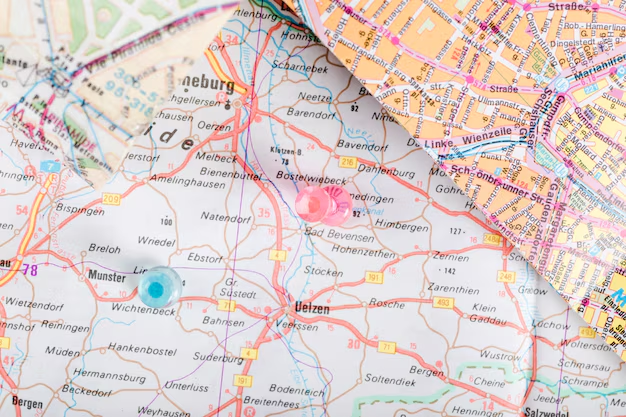Discover Where EBT is Accepted: An In-Depth Guide
For many Americans, EBT (Electronic Benefit Transfer) is a crucial part of managing daily finances, enabling access to essential nutrition and support benefits. Understanding where EBT is accepted can significantly enhance the way individuals manage their cards efficiently and effectively. This guide explores what EBT is, where it can be used, variations by state, and practical tips for cardholders. Let's delve into the details, ensuring you get the most out of your EBT benefits.
Understanding EBT: The Basics
EBT stands for Electronic Benefit Transfer, a system used by states across the U.S. to distribute public assistance benefits via a magnetically encoded payment card. These benefits encompass various programs, with the most recognized being the Supplemental Nutrition Assistance Program (SNAP), which helps individuals and families access nutritious food.
What Can EBT Be Used For?
EBT cards are predominantly used for purchasing food items. Here’s a brief overview:
- Allowed Purchases: Fruits, vegetables, meat, poultry, dairy products, bread, cereals, non-alcoholic beverages, seeds, and plants that produce food.
- Restricted Purchases: Alcohol, tobacco, vitamins, medicine, household supplies, and hot prepared foods.
Where Can You Use Your EBT Card?
Knowing where your EBT card is accepted can simplify your shopping experience. Here are the main locations:
💼 Grocery Stores and Supermarkets
Most large grocery store chains accept EBT cards. Look for prominent retailers as they are likely EBT-friendly, providing access to a wide array of approved items.
🛒 Discount and Warehouse Stores
Stores such as warehouse clubs often accept EBT, allowing consumers to buy food in bulk. While not all warehouse stores are EBT-compatible, many offer essential discounts to cardholders.
🌿 Farmers’ Markets
A fantastic way to get fresh produce is through local farmers' markets. Many states have initiatives that permit or enhance the use of EBT at these markets, sometimes offering matched funds for purchases.
🏪 Convenience Stores
Select convenience stores are authorized to accept EBT, though the range of permissible items may be more limited than in grocery stores.
🍎 Specialty Food Stores
Some health food and specialty stores, known for organic and specific diet products, also accept EBT. It’s always good to call ahead or inquire on your first visit to confirm acceptance.
🏬 Online Retailers
In recent years, the acceptance of EBT has expanded into the online space, particularly with major retailers offering delivery or pickup services for EBT-eligible items. This can be particularly useful for those with mobility issues or limited access to transportation.
State Variations and Policies
📋 State-Specific Rules
Each state has its unique setup for managing and distributing EBT benefits. While the core benefits are the same, additional programs and the specific nuances about where EBT is accepted can vary.
- Implementation Variability: Some states have additional programs like cash assistance that may allow for more flexible spending.
🔄 Changes in EBT Acceptance
Laws and regulations can evolve, affecting where and how EBT cards are accepted. Staying updated by checking the latest information from local government websites is advisable for cardholders.
Practical Tips for EBT Cardholders
🧠 Maximize Your Benefits
To make the most out of EBT benefits:
- Plan Your Shopping: Create a list to avoid impulse purchases and ensure all items are EBT-eligible.
- Check Eligibility: Different states may have unique eligibility for additional benefits; ensuring you maximize all potential help is key.
🛍️ Smart Shopping Locations
Consider these tips when looking for the best places to shop using your EBT card:
- Check Store Policies: Always confirm that your favorite stores accept EBT before shopping.
- Explore Local Options: Small, local markets often offer competitive pricing and fresh options.
- Utilize Online Services: For added convenience, use retailers that offer home delivery or in-store pickup.
Common Misconceptions
🔍 EBT is Only for Food
While SNAP benefits on the EBT card are food-specific, some states load other types of assistance onto the card, which might be used for basic necessities like housing.
❌ All Stores Accept EBT
Not every grocery or retail store accepts EBT, especially luxury or specialty stores. Ensuring a store’s participation in the EBT network can save time and help create efficient shopping habits.
A Glance at Key Takeaways
Here’s a quick summary to help you navigate EBT usage effectively:
- 🛒 Primary Retailers: Supermarkets, discount stores, and online retailers.
- 🟢 EBT-Friendly Markets: Farmers' markets and some health food stores.
- ❌ Restrictions: No alcoholic beverages, tobacco, household supplies, or hot foods.
- State Specifics: Policies and store acceptance can differ; always verify locally.
- 💡 Maximization Tips: Plan ahead, check for additional benefits, and explore both physical and digital shopping options.
Conclusion Insight
EBT acceptance spans a multitude of locations, adaptable to what fits the needs and lifestyles of each cardholder. By understanding the nuances of store policies, state-specific variances, and the types of goods eligible for purchase, individuals can optimize their benefit use. Ultimately, knowledge and strategy are key in making the most out of every dollar available through EBT. Whether it’s shopping in-store or online, at a large chain or a local farmer’s market, your EBT card is a valuable tool in managing your grocery budget and ensuring that nutritious food is always within reach.

Related Topics
- Are There Any Meal Kits That Accept Ebt
- Can I Add Ebt To Apple Pay
- Can I Buy Dog Food With Ebt
- Can I Buy Protein Powder With Ebt
- Can I Buy Vitamins With Ebt
- Can I Get a Replacement Ebt Card The Same Day
- Can I Use Coupons With My Ebt At Walmart
- Can I Use Ebt At Costco
- Can I Use Ebt At Target
- Can I Use Ebt Cash On Amazon